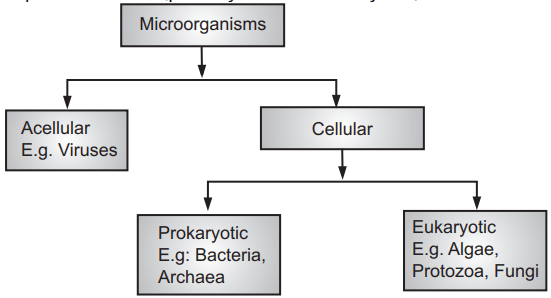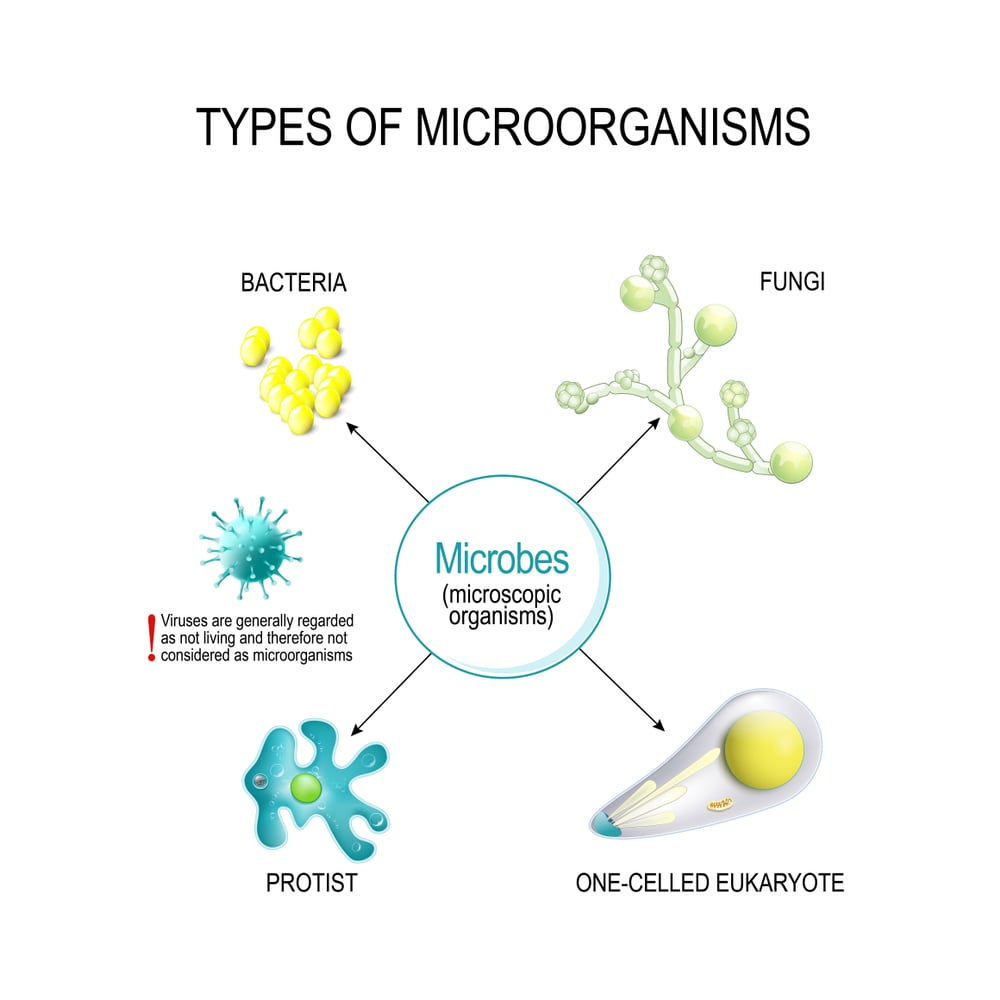Microbes are widely spread in an environment in which some are responsible for serious harm and some are beneficial to life. They are classified into six major groups namely bacteria, archaea, fungi, protozoa, algae, and viruses. All these microorganisms broadly belong to two groups viz. Cellular (prokaryotic and eukaryotic) and acellular.

Table of Contents
Acellular microorganisms:
These are microorganisms that have neither cells nor cell membranes. They are composed of a few genes which are protected by a protein coat. Outside of the host, they act as dead but inside the host, they are alive and reproduce. Example: Viruses.
Cellular microorganisms:
These are microorganisms that have definite cell structures. Based on the cellular structure they are further divided into prokaryotic and eukaryotic. Prokaryotic are cells without a nucleus and have no membrane-bound organelles. They are less complex in structures. Examples: Bacteria and Archaea.
Classification of Microorganisms they are:
Bacteria:
(singular: Bacterium) (study of bacteria: bacteriology)
- They are prokaryotic and unicellular
- The size is 1/1000 the volume of a typical eukaryotic cell.
- Mainly two groups of bacteria are:
- Archaeobacteria: Ancient bacteria.
- Eubacteria: True bacteria.
4. They are in various shapes likely bacillus (rod), coccus (spherical), spirillum (spiral), vibrio (curved rod).
5. They are motile or non-motile.
6. They obtain their energy from the sun as well as from organic and inorganic molecules, and as per that they are classified as Photosynthetic autotrophs (use energy from the sun to produce their own carbohydrates for energy), Chemosynthetic autotrophs (process inorganic molecules for energy (example: sulfur or iron) and heterotrophs (depend on outside sources of organic molecules (example: carbohydrates or sugars) for energy.
7. Optimum temperature: −20o C to 110o C (freezing is 0o C and boiling is 100o C).
Algae:
- They are eukaryotic, unicellular, or multicellular.
- They are microscopic and macroscopic in size.
- They are motile or non-motile.
- They obtain their energy from photosynthetic autotrophs.
Fungi:
- They are eukaryotic.
- They are unicellular or multicellular (yeasts are unicellular, molds are multicellular).
- They are non-motile.
- They obtain their energy from an outside source of organic molecules.
- They act as scavengers, they live off dead matter and thus, decompose it.
Protozoa:
- They are eukaryotic.
- They are unicellular.
- They are motile or non-motile.
- They obtain energy from an outside source of organic molecules.
Viruses:
- They are acellular and obligate intracellular parasites.
- Structure of a virus: A piece of nucleic acid (RNA or DNA) enclosed by a protein coat (capsid); possesses no nucleus, organelles, cell membrane, or cytoplasm.
- Size – 1/10 to 1/1000 the size of an ordinary bacterial cell.
- They are non-motile
Make sure you also check our other amazing Article on : Cellular level of organisation
